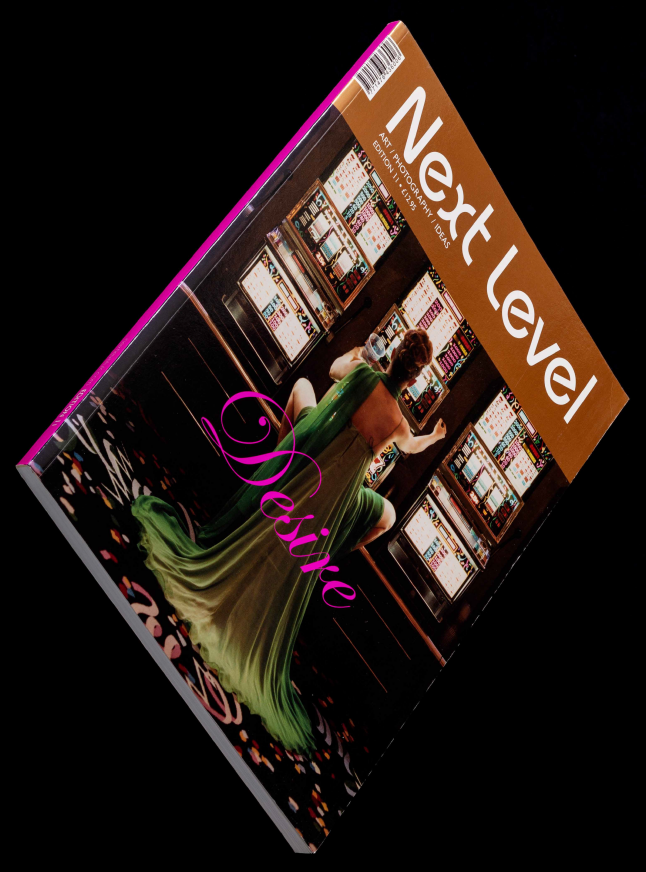Jean-Christian BourcartStardust

Seeing, drifting, is it possible to stay on the safe side of the imagination?
Sometimes the image appears to be a ghostly alien in a swirl of bright colour. Sometimes the image looks like a fading memory. In another photograph, a couple appears to be having an intense, unknown conversation behind frosted or fogged glass. These photographs don’t exist on the same reality plane as the viewer but instead, seem to be coming through a window from another world or from a distant memory. They are images in Jean-Christian Bourcart’s Stardust series.
Like Bill Jacobson’s soft-focus photos or Hiroshi Sugimoto’s fuzzy architectural views, Bourcart’s photographs at first viewing challenge the notion that sharply focused exactitudes are what photographers should strive for. By recording images that are not sharp, the photographer forces us to expand our definition of what constitutes a successful camera image.
There is something refreshing and enticing about Bourcart’s images but the style that first attracts the viewer is only part of the appeal. Each image’s subject always includes the vague outline of a person, alone or with others. A kiss becomes a fluid unfolding event. It’s not a frozen, dead instant. The images live in a mysterious world where nothing is clear, limited or obvious.
Bourcart conceived the idea in a movie theatre after noticing the light streaming from the projection booth – another room, another world – and seeing that it left an image on the glass window. There is a kind of mystery in light coming from a secondary source. A similar hidden light source attracted Jeff Wall to images on publicly illuminated advertisements; Bourcart was attracted like a moth who could not resist the intensity. He began to go back to the cinema in the early morning when he could find it mostly empty place so as not to disturb people with his clicking. He even made a video of the scene, doubly fascinating for the added attraction of dust particles that rise and drop, like elements glimpsed from another solar system.
Stardust #34 is the image of a kiss in motion between a man and a woman that exists as a dream of a time remembered. Stardust #37 is a spooky image of a black torso surrounded by a golden sea of floating golden particles that seem to live in an alien world. Another image, Stardust #14, shows a couple gazing down at something not revealed. The artist has also noticed that ‘maybe this is close to a newborn’s image of his parents bending over the crib. This image is capture so close to its source that it exists as a quasi-image, something primordial, like a sonogram of the film; histories are dissolved, stars become shadows or stains of light. Abstraction wins over Hollywood. Vacuity steals the show and all is to be imagined anew.’
The relationship between photographer and subject in Stardust is very much in synch with earlier series by Bourcart that included people recorded secretly in brothels (1992), people in swingers clubs (1998-2001) and drivers trapped in their cars while stuck in traffic (1999-2003). In each case, there is very little, if any contact, between Bourcart and his subjects except an occasional driver’s stare. There is no chance for a dialogue. In the brothels, the victims never knew they were being photographed and in the cars the people trapped would never risk leaving their vehicles to confront the photographer.
While we view the people in Bourcart’s photographs in the midst of interaction, we are left with no clear understanding of their motivation. In fact, the artist, who was born in France but now lives in New York City, prefers to live quietly with his family and see few friends. He prefers to observe from the outside.
The images in Stardust hit a chord in today’s society where people have become increasingly isolated as they retreat behind their iPods, computer screens and widescreen HD televisions – passively looking and listening but not interacting. We see people at a distance like characters in a film we can watch but not question, an image that’s nowhere more strikingly expressed than in Jean-Christian Bourcart’s photographs.
